There are several ways to sew cloths, because the corners and side sections of the fabric can be processed in different ways. In this material, we described the traditional and basic way, having mastered that you can sew with your own hands not only festive or everyday tablecloths, but also kitchen napkins, towels and runners with neat corners and edges.
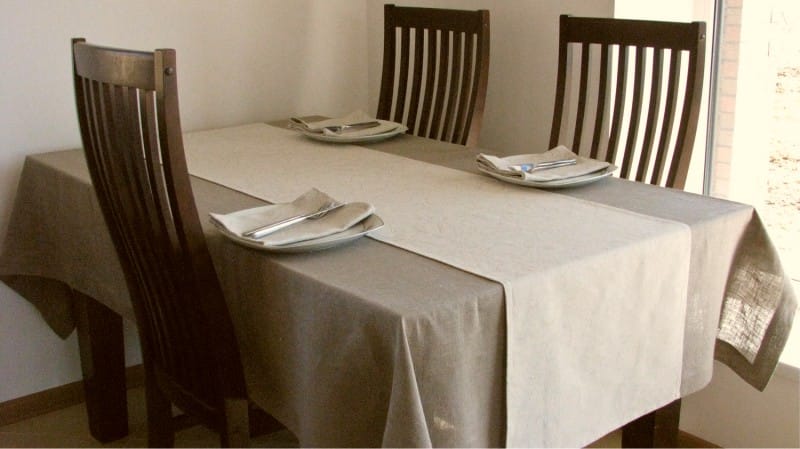
To sew a tablecloth with your own hands you will need:
- The size of a suitable fabric should be the size (from which material it is better to sew a tablecloth in the article “Choosing a tablecloth in 6 steps", In this master class the tablecloth was made of linen);
- Threads in tone of fabric and decorative furnish;
- Sewing machine;
- Sewing accessories: tailors' scissors, ruler, measuring tape, pins, thimble, needle threader, crayon or marker;
- Decor if desired (it can be: sewing, border, fringe, lace, braid, etc.);
- Iron.
Step 1. Calculate fabric consumption
- Measure the length and width of the tabletop;
- Determine the desired length of the overhang of the fabric, that is, the distance from the edge of the tabletop to the edge of the future tablecloth.
- The overhang of the fabric can be 20-40 cm or have a floor length. The longer the overhang, the more elegant the tablecloth will turn out, but the more inconvenient it is to use, therefore the length of the overhang is 20-30 cm;
- When determining the length of the overhang, take into account the percentage of shrinkage of the fabric after washing - for cotton linen and burlap, add 10 cm to the desired length of the overhang, 10–15 cm for linseed.
- Now take the paper and pen and calculate the consumption of fabric according to the following simple formula:
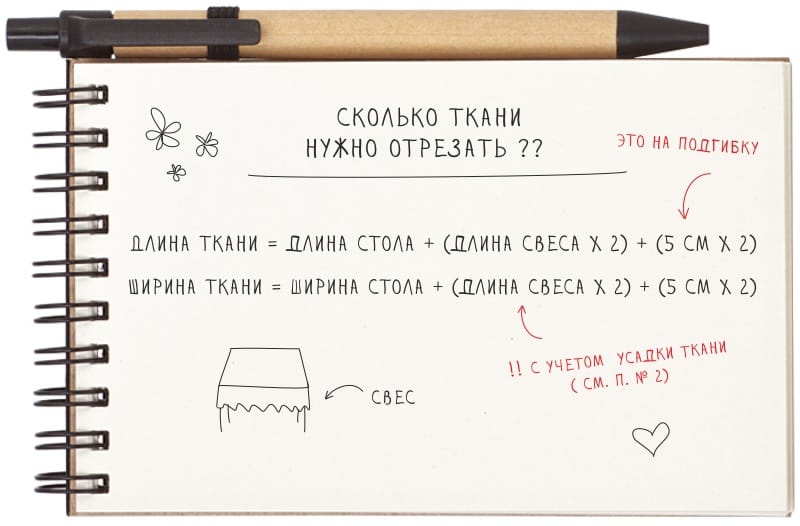
- Please note that this formula contains a 5 cm hem allowance, and the hem itself will be only 4 cm wide.
Step 2. Cut out the fabric
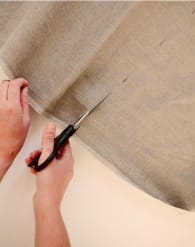
Iron the fabric, if necessary, then lay it on the working surface, make notes using a ruler and a pencil, and then cut off the excess, patterns for a simple rectangular or square tablecloth are not needed.
- The best way to chart a cutting line is to pull the thread out of the fabric. To do this, make a small incision in the right place, pull and gently pull the thread, which will be your guideline.
Step 3. Handle the corners
Now we need to arrange the corners so that they look beautiful even from the inside. For this:
- Put the fabric on the table "face" down, bend its edges 1 cm on the wrong side, fix the bends with pins (if necessary, mark out) and iron around the entire perimeter of the fabric.
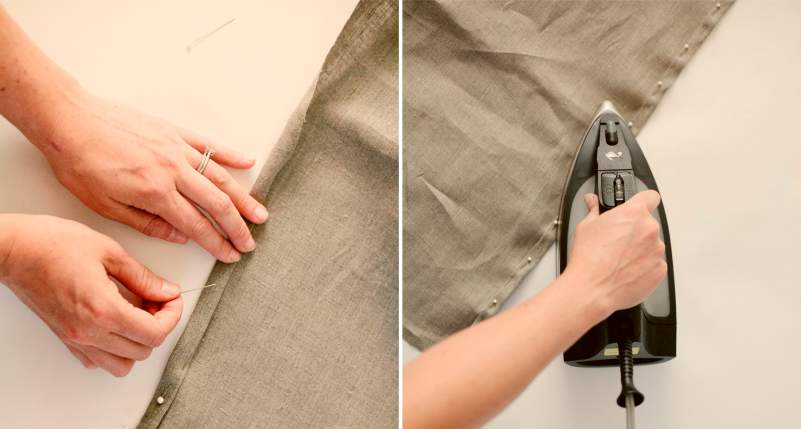
- Next, in both directions from the corner, we measure out 2 times more than the bending width you have planned (in this master class, the width of the hem is planned is 4 cm, so a distance of 8 cm from the corner is measured). Then both marks must be connected with a ruler and a pencil.
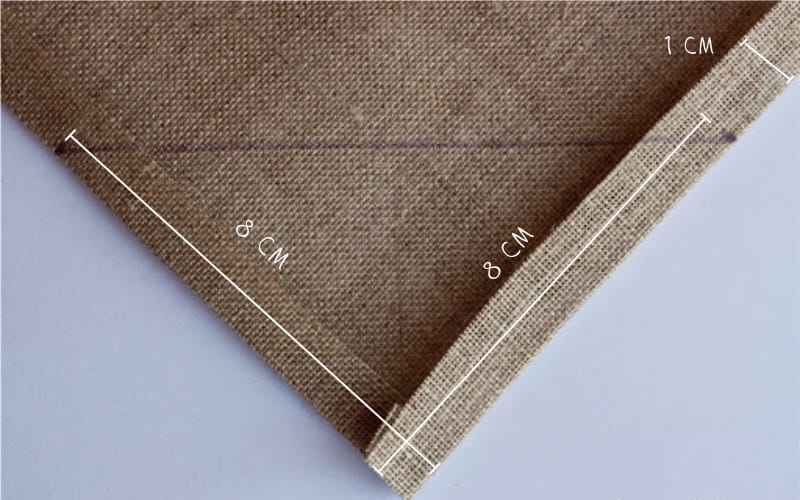
- Fold the fabric in the corner (with the wrong side out) along so that the tags match and fix the place of the fold with pins. Then we scribe a corner by marking.
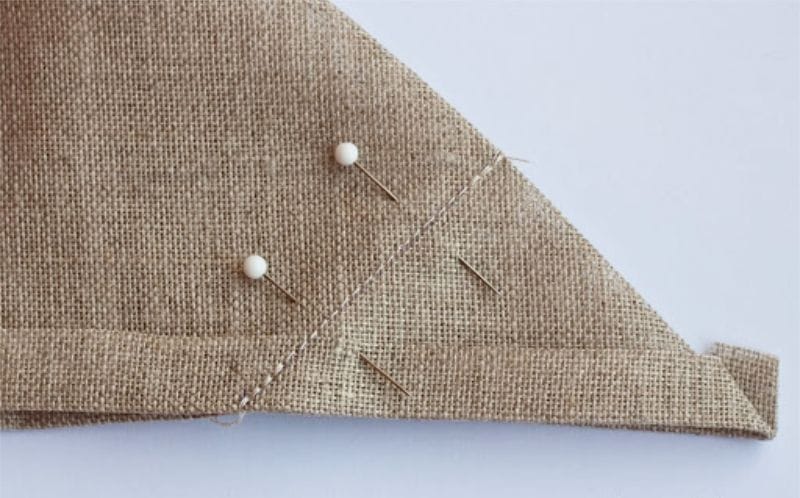
- The excess in the corner is cut off, leaving only 5 mm of the seam allowance from the seam. Also trim the edge of the remaining allowance at the bend of the diagonals as shown in the photo below. This should be done to ensure that the corner of the tablecloth is twisted smoothly.
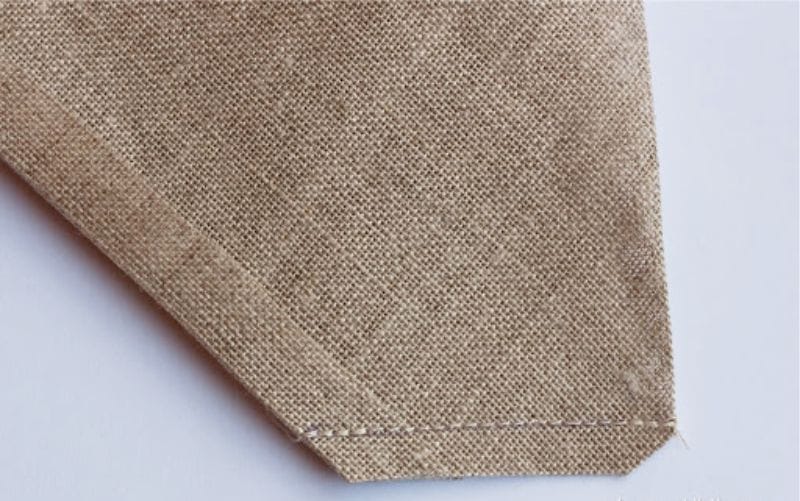
- Turning the corner, correcting and ironing. Next, we process the remaining 3 corners of the tablecloth. That's what you should do.
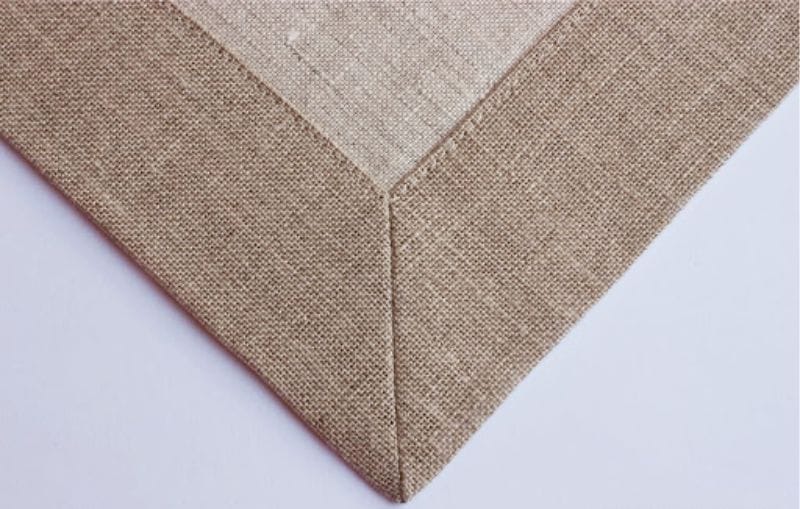
Step 4. Stitch the hem
And finally, we begin to process the sides: ironing the folds of the entire tablecloth, fixing them with pins and stitching (from the inside out) on a typewriter or in a hand-made secret stitch at a distance of 1 mm from the bend.
Step 5. We decorate the tablecloth
If desired, you can decorate the resulting product with lace, appliqués, fringe, ruffles and ruffles, embroider monograms and patterns. All the same article “Choosing a tablecloth in 6 steps” will help you to see beautiful tablecloths with an original decor in a different style from Provence to Classics and inspire your creativity.
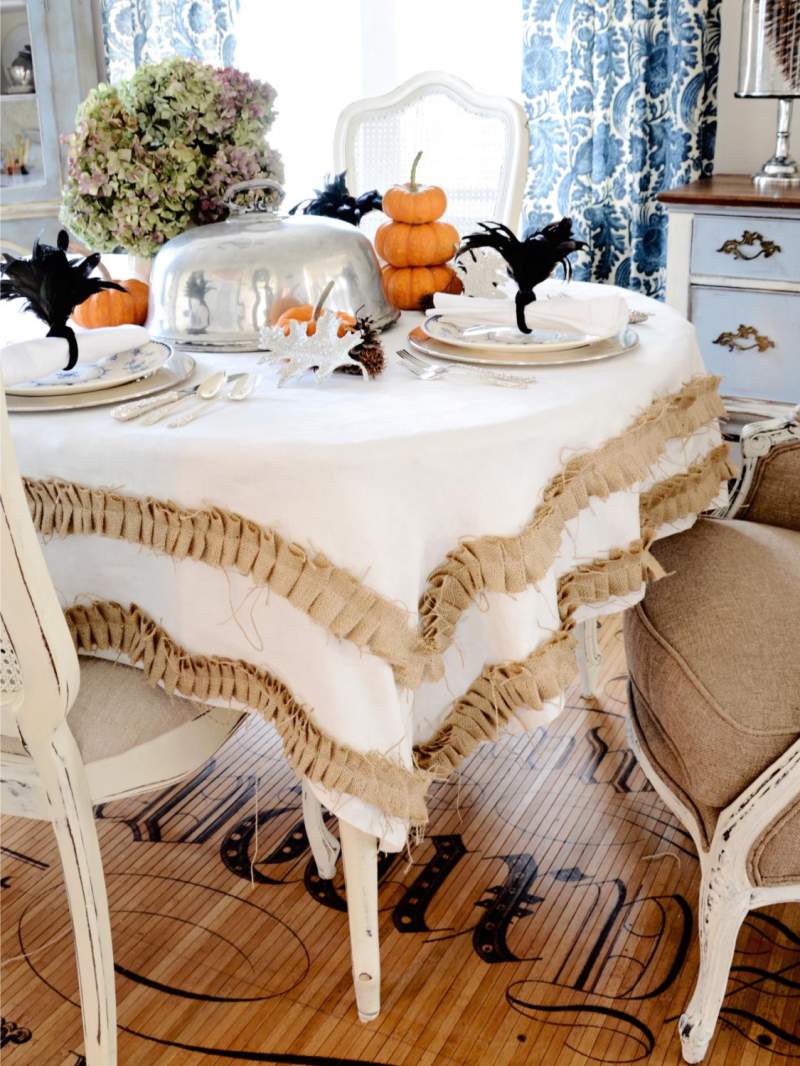
Provence tablecloth decor: cotton tablecloth decorated with gathered hemming stripes
In the next video tutorial you will be able to see not only the full process of sewing the tablecloth, but also its decorating.
In our master class, we considered only the method of sewing a rectangular or square tablecloth, but how to sew a decoration for a round table? We suggest that you familiarize yourself with the video tutorial on how to easily cut the fabric for a round tablecloth without using a pattern and treat its cuts with an oblique piping or adhesive web.
- Choosing a tablecloth in 6 steps
- All about sewing an apron for the kitchen - instructions, tips and photos for inspiration
- Ideas and workshops on sewing tacks with your own hands
- We sew a kitchen towel - a master class and do-it-yourself decor ideas
- Sewing a children's apron: a master class, ideas and 70 photos for inspiration

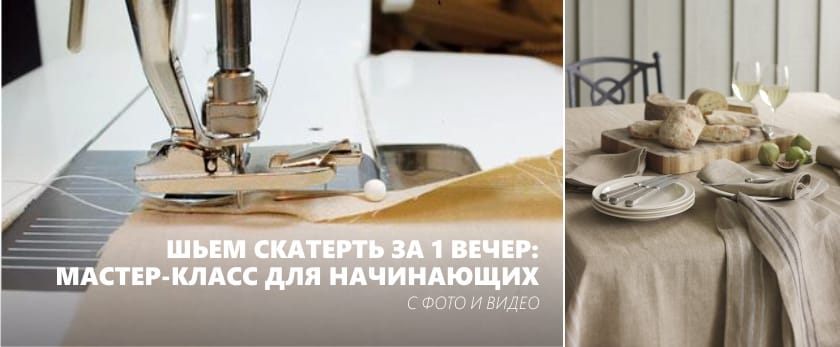

 (Rate the material! Already voted:48 average rating: 4,54 from 5)
(Rate the material! Already voted:48 average rating: 4,54 from 5)
Thank you very much for the article, and it happened, for the evening I made a new tablecloth!